|
6/2/2021 0 Comments Hyun De Grande - 光影追逐者HYUN DE GRANDE was born in Korea but based in Belgium since he was a kid. He has been a cinematographer for a long time. As an image creator, he has a sensitive and great observe of light and shadow. So he picks up the camera to document the scenes in his life besides his work. From motion picture to photographs, there are more details through his camera. It always comes with strong light and shadow in his pictures, at the same time it's very peaceful when you look at his works. He's traveled to Toronto in 2019, I just moved to Toronto that time, and I met him in this diversity city. I was very impressed and obsessed with his unique cinematic styles. 定居於比利時的韓裔攝影師HYUN DE GRANDE長期擔任電影攝影師一角。 身為影像工作者,對於光與影有著敏感觀察度,因此在工作之餘,他拾起相機紀錄生活周遭的畫面。 從動態到靜態,在他的鏡頭下看見更多細節。 他的照片中總是帶著強烈對比的光與影,同時也讓人感到平靜。 他曾在2019年至多年至多倫多旅行,當時我剛搬到多倫多,與他在這座文化融爐的城市相遇, 對於他獨特的影像風格十分讚賞及印象深刻。 Q1: Please introduce yourself shortly, and tell us what are you doing in your life now? My name is Hyun De Grande. I’m a cinematographer from Belgium, and I mainly work in the narrative and commercial fields. I also started doing street photography in 2019 as a passion on the side. 請簡單介紹一下你自己以及你目前在做的事情。 我的名字是Hyun De Grande。我是一位來自比利時的電影攝影師,我主要創作在敘事故事和廣告影像。 在工作之餘,從2019年開始我也開始從事個人的街頭攝影創作。 Q2: Where are you from? Tell us about your background. Do you think different places influenced you in a different way when you create your work? How so? I was born in Seoul, South Korea but I was adopted to Belgium when I was 4 months old. I grew up in a small town close to Bruges with my parents and my brother until I later moved to Ghent to study film. I only stayed there for two years, and then I decided to move to Brussels to study cinematography. This is where I currently have been living for the past 11 years. I absolutely think that different places influence me in different ways. Every location has its own identity, so I receive different kinds of inspiration wherever I go. That’s also why I love travelling! It opens your eyes towards new cultures and new perspectives on life, which is very important to me. 你的背景來自哪裡?告訴我們你的文化。 你覺得不同地方是如何以不同方式影響你的創作?像是如何? 我在南韓首爾出生,但是在我四歲時被比利時的家人領養,從此在那邊成長。我在比利時一個接近Bruges的小鎮與我的父母和兄弟居住,直到我搬到Ghent就讀影像。我在那個城市只待了兩年,然後我就決定遷移至Brussels就讀電影,這裡也成為我過去11年人生的居住地。 我絕對感到不同地方以不同方式影響了我,每個地方都有它獨特的特性,所以不管我去到那,我都受到了不同啟發。這也是為什麼我熱愛旅行! 他可以打開你的眼界你的眼界並帶領你進入新的文化以及開拓人生新的視野,這是對我非常重要的一點。 Q3: When did you start your photography project? Why you wanted to start it at the first? Also, tell us about your image concept. I studied both film and photography when I was younger. Afterwards, I chose to continue my studies and my career in the film industry, and so my photography was slowly moving to the background. I wasn’t taking any photographs for a while, until 2019. During that year I didn’t have a lot of movie projects, which meant I had a lot of free time. I was looking for a way to keep myself focused, and to keep training my skills to create images, so I decided to give photography another chance. I wanted to do street photography, because that really fascinated me. Just walking around with a camera and capturing these spontaneous moments around you is so fulfilling. My goal from the beginning was to play around with cinematic elements because that was a language I felt comfortable with. That’s also one of the main reasons why I photograph all my pictures in a wide aspect ratio. I shoot with a fairly wide-angle lens (23mm fuji), and I rarely shoot close-ups because I like using the environment in the frame to convey emotions, even when the environment is totally abstract. For example, I really enjoy using the negative space because it can add a sense of loneliness, emptiness or alienation; which are all emotions I’m personally drawn to. I also prefer my shots to be clean and calm. Simple lines or shapes, not too many subjects, not too much information. It helps me to translate simple ideas that are easily readable. 你是從何時開啟你的攝影計畫?起初為什麼會想開始從事平面攝影?也請告訴我們你的影像概念。 在我年輕時,我就讀了電影與攝影。自此之後,我選擇繼續所學在動態影像產業工作,所以我的平面攝影就很緩慢地先被放在一旁。 我有好一陣子沒有拍任何照片,直到2019年。那一年我沒有太多電影案子,也就是說我有更多自由時間。我當時在尋找一個可以讓我專注,持續訓練我的技巧以繼續影像創作,所以我決定給平面攝影再一次機會。我想要做街頭攝影,因為那真的很吸引我。只是拿著一台相機到處走走,並且捕捉那些在你週遭不經意的時刻是多麽的充實。 我一開始的動機是玩弄那些電影感的元素,因為那是讓我覺得很舒服的語言。那也是為什麼我在拍我所有照片時都用電影比例拍攝的其中一個主因。 我用一顆相當廣角的鏡頭(23mm fuji),然後我很少近距離拍攝,因為我喜歡利用大環境在鏡頭前去傳達情緒,即使環境是十分抽象的。 舉例來說,我真的很喜歡使用負空間,因為它可以增加孤獨感、空虛感或疏離感,這些都是我個人被吸引的情緒。 我也喜歡我的拍攝是乾淨且冷靜的。簡單線條或形狀,不要太多主體,不要太多資訊。這幫助我翻譯了容易閱讀的簡單想法。 Q4: So your main job is a cinematographer, what’s the difference when you chose the way to create the images? Do you like being a photographer more or a cinematographer? The biggest difference for me is the way how an image is made. In cinema every frame is created through a collaboration with other people. Usually it’s a process that involves planning, rehearsing and fabrication. Whereas in street photography you create every shot by yourself, and it is mostly improvised. Also, the perception of a cinematic frame is completely different compared to a photograph. A photograph usually stands alone, and therefore it has to be able to tell a story, or to convey an emotion, through that one single image which is frozen in time. A movie frame usually only gathers meaning once you see it within the context of a shot or a scene. It’s a totally different mindset between both, even though they utilize the same tools such as aperture, shutter speed, focal length, etc. I find both equally interesting, because they provide me with completely different sets of challenges, ideas and workflows. They complement one another in a very enriching way for me personally. 所以你的主要職業是動態攝影師,當你在選擇創作影像時差異在哪? 你比較喜歡當一位平面攝影師還是動態攝影師? 對我而言最大不同之處在於影像如何被製造。在動態影像中每一幅畫面都是和其他人合作一起創造的。通常它是一個牽涉到計畫、彩排、以及製造的過程。然而在街頭攝影中,你自己創造了每一個影像,而且它通常是即興的。再者,電影的畫面認知與攝影畫面是截然不同的。一張平面照片通常是單一個體,因此他必須能夠敘說一個故事或是傳達一種情緒,單就透過一張照片就凍結時間。一個電影的畫面通常只有在你看到前後內容時才有意義。這兩者的心靈層面上是完全不同的。即使他們使用同樣的工具像是光圈、快門、焦距......等等。我發覺兩者都很有趣,因為他們給了我完全不同的挑戰、想法與工作流程。對我而言他們以非常豐富的方式互補。 Q5: How do you create your work? Where is your inspiration from? If you don’t have any inspiration, what would you do? My inspiration comes from a lot of different places, such as movies, museums, galleries, books, music or travels. Instagram has become a main source of inspiration for my photography work specifically. There’s a lot of fantastic work on there by photographers from around the world, be it professionals or amateurs. That’s why I love apps like Instagram. They provide a platform for people who wouldn’t be able to showcase their work otherwise. But at the same time, they also provide a platform for an audience to discover work from artists you wouldn’t be able to discover otherwise. And seeing huge amounts of beautiful art by other people just raises the bar for myself, because it mentally pushes me to keep improving and to keep shooting. It really motivates me! 你是如何創作你的作品?你的靈感來自於哪裡?如果你沒有任何靈感,你會怎麼做? 我的靈感來自很多不同地方,像是電影、美術館、畫廊、書籍、音樂或旅行。一直以來,Instagram特別成為一個啟發我攝影作品的主要來源。在那個平台有很多驚人之作,由來自世界各地不同攝影師所創造,不管是專業的或業餘的。那就是為什麼我喜歡像Instagram這種類型的軟體。他們為那些無法展現他們的作品的人提供了一個平台。但是他們同時也提供了觀眾無法在其他地方挖掘藝術家的一個平台。看到其他人創作出大量漂亮的藝術品只會提高我對自己的標準,因為在精神層面上它促使我持續進步且不斷拍攝,這真的激發了我! Q6: If you can collaborate with one person, who would be that person? Why? There are tons of people I’d love to work with, but I would be very happy to receive a phone call from Wong Kar Wai one day! ☺ 如果你可以跟任何一個人合作,會是誰?為什麼? 有很多人我都想合作,但是如果有一天能接到王家衛的電話跟他一起創作我會非常開心! Q7: Please share one of your pictures with us, the most special one or interesting one you love, what’s the story behind it? I took this shot while I was walking in Toronto with you actually. It was near Union Station, and I noticed this redheaded girl sitting on a ledge by herself. I was really fascinated by her posture, with her straight back and her hands cupped in front of her. Her head was tilted down a bit, which created a feeling of sadness or a sense of melancholy underlying the scene. The light was also hitting her in such a beautiful way, as if she was being isolated from her surroundings. She seemed so fragile, as if she was contemplating her life on that ledge. The contrasting tones of the warm wall and the cool reflections in the glass buildings on the right side also really caught my eye. It looked so pleasing esthetically, but it also fitted the narrative of a person who is trying to find balance. This image immediately sparked my interest once I saw it, and I’m very happy I was able to capture it! 請跟我們分享你最喜歡自己拍的一張照片,最特別或你最愛的,背後有什麼特別故事也請跟我們分享。 這張照片其實是我跟你走在多倫多街頭時拍攝的。這在聯合車站附近,我注意到這個紅髮女孩獨自坐在一個平台邊緣。我當時真的被她的姿態深深著迷,伴隨著她的挺直背脊以及她的雙手捧在她前方。她的頭微微低下,像是在現場創造出一種悲傷感或是憂鬱感。那道光也用一種美妙的方式照射在她身上,像是她跟周遭環境孤立。她看起來很脆弱,彷彿她在那個台上思考著她的人生。溫暖的牆壁色調與冷冷的玻璃反射顏色強烈對比也抓住我的眼睛。這在美學上看起來十分令人歡愉,但它同時也符合描述一個人試著找到平衡的樣貌。當我看到這張照片時立刻引起我的興趣,我很開心我可以捕捉這一刻。 Q8: Who inspires you the most so far in your life? Why? One of my all-time favourite photographers is Fan Ho. He is mainly known for documenting the streets of Hong Kong during the 50s and 60s. His style is characterized by bold uses of geometry, light and shadow to emphasize emotions. His subjects often seem fragile within the large compositions he frames them in. There’s a sense of serenity in his work to which I’m really drawn to. He also had a very human approach to his work, in the sense that he found it essential for any photographer to feel a scene before you can capture it, otherwise it wouldn’t make any sense. I absolutely agree with that philosophy because art should always be about emotions above aesthetics in my opinion. Edward Hopper is also a huge influence! I really love his depictions of loneliness and alienation throughout his paintings. His characters often seem lost in space or time, to which the audience is a distant observer. Those particular emotions fascinate me as a person and that’s probably why I can easily connect with his work. Another artist who has impacted my work is Philip-Lorca DiCorcia, but in a very different way compared to Fan Ho. DiCorcia’s photographs are very stylized and cinematic, which is definitely a recurring theme in my own work as well. There are many other artists who inspire me, but I guess those three are examples of people with a recognizable link to my photography work. 誰在你的人生中激發你最深?為什麼? 我一直以來最喜歡的攝影師之一是何藩。他廣為人知的是紀錄了50到60年代的香港街頭。他的風格是大膽使用幾何、光影去強調情緒。他的構圖主體經常伴隨著巨大結構卻看似脆弱。他的作品有一種寧靜的感覺我真的深深著迷。他也有著非常人性化的作品,他找到任何攝影師都必須在捕捉畫面前感受到場景的情感,否則會不合理。我完全認同他的哲學理論,因為在我眼中,藝術應該永遠把情緒表達放在美感之上。 愛德華·霍普則是有著巨大的影響!我真的熱愛他在繪畫中對孤寂和疏離感的描述。他的角色們經常看起來像是迷失在空間或時間裡,而觀眾是一個遙遠的觀察者。那些特定的情緒讓我著迷,而那大概就是為什麼我可以很輕易地和他的作品有連結。 另一位深深影響我的作品的藝術家則是菲利普-洛卡·迪可絲雅,但是和何藩相較下是以一種非常不同的方式。菲利普-洛卡·迪可絲雅的照片非常具有風格和電影感,這絕對也是反覆出現在我作品中的元素之一。 還有很多其他藝術家影響了我,但我猜這三位大概是與我的攝影作品有著較可辨識的連結的例子。
0 Comments
4/13/2020 Mongo猛婷王 - 插畫異想世界猛哥Mongo的作品充滿夢幻囈語,綺麗的色彩與超現實構圖讓人一頭栽入她的異想世界。 出生於臺灣高雄,長期在台北居住生活,畢業於台灣藝術大學的她有許多經歷,曾至英國居住, 也跟不同領域的對象跨界合作,日本樂團Nabowa在台演出時的海報就是其代表之一。 看似水墨的筆觸與豐富色彩的插畫是許多少女心中的幻想,結合人物畫與植物動物的元素十分獨特。 簡單不失創意的創作討人喜愛,目前為平面設計自由接案者,是位個性非常可愛的女孩~ Q1: 請簡單介紹一下你的過往工作經驗以及你目前在做的事情。 出社會後的第一份工作是在零售企業裡擔任平面設計師,接觸過電商、店鋪、藝廊、餐廳..等領域。 離開第一份工作後,開始轉為一邊創作接案,一邊在其他公司做兼職inhouse設計的工作模式,其中一年跑去英國打工度假。目前除了自己畫創作、接插畫設計案、偶爾參加市集,同時也在只是設計工作室裡兼差做設計。 Q2:當時為什麼會想就讀設計科系?或是進入插畫的世界? 從小到大畫畫用掉的精力可能比說話還多。受漫畫影響很大,喜歡畫些圖文故事感、天馬行空的塗鴉,不愛傳統美術教的的靜物素描、風景水彩。大概是因為這樣選擇了念視覺設計系,後來慢慢的把插畫在平面設計裡。工作時依照設計案的需求發展插畫的樣貌,曾經一度覺得自己風格很混亂,現在花比較多時間畫自己喜愛的東西,由於喜歡畫人物,所以也開始接私人肖像訂製畫。 Q3:曾經在海外居住過的經驗對你的創作有什麼影響或改變嗎?請與我們分享當時的一些生活故事或想法。 為什麼當初會想去英國呢? 在倫敦打工度假的時候,拋下以往做設計的工作型態,我在一間鞋店做銷售員,同時也在重整自己的創作方向。適應新環境的衝擊下,能產生不同角度看待自己的心態跟定位,對生活方式的想像不再單一。身在異鄉,雖然資源比較匱乏,但也會更珍惜機會去做一件想做的事。 當時一直想在30年齡限制之前,利用部分積蓄去體驗一次打工旅行,同時因為有好朋友在倫敦唸書,碰碰運氣抽中了英國打工簽,於是就順勢決定去倫敦。 Q4:在這些經驗中,請分享一次最有挑戰或最有趣的經驗。 第一次擺攤畫人像速寫似顏繪,和朋友一起報名在Brick Lane的Backyard市集,一開始畫太緊張手會抖,體驗到人客各種奇怪要求,例如要用5個不同照片的人畫一個合照,照片畫質還不一,一天下來畫快三十個人,畫到因為手痛而手抖。因為我喜歡描繪人臉,所以那時還蠻享受的(抖M傾向)。 Q5:你生活中的創作靈感來源是什麼?在沒有靈感時會做什麼事? 平日生活看到奇怪有趣的畫面,會用手機拍照記錄起來, 對於時事或當下的感受也會用文字紀錄,大部分的創作靈感是來自這些塗鴉筆記,混搭拼湊新的想法而成。 沒有靈感的時候,會去找能讓自己腦內啡飆升的事物,音樂和對我的幫助很大,影劇也是,或者去google研究某個人事物的八卦故事,還有IG上的創作串聯活動也很有幫助。 Q6:如果可以的話你最想和誰合作?(不限領域與知名度)為什麼?想做什麼合作計畫? 想隨機找有緣的“地方”合作。因為之前兩次打工換宿的經驗:一次是透過朋友介紹下,在宜蘭的農場彩繪貨櫃屋;一次是在媒合網站上到德國布格豪森的自營社區,彩繪廢棄的露營車,由於那兩次的經驗很好,所以很希望能再利用繪畫專長,做視覺相關的現地創作計畫。 雖然有人覺得這樣好像把藝術變成廉價勞力,但我覺得是一種跳脫僱傭關係,各取所需的互利交換。 Q7:影響你最深的人或創作者是誰?為什麼? 卡夫卡跟赫塞.赫曼,人生觀很受他們的作品啟發,想將創作當成一種修行。 Q8: 未來有什麼計畫或夢想呢?請對那些追求自己目標的人說一句話。 目前沒有具體的計劃跟目標,但一直都很致力追求身心&收支平衡, 期望自己的作品能夠給予別人精神上關懷跟養分,尤其在最近疫情造成的不安定局勢下。 祝他們身體心靈都健康,普通的願望是現在最難達到的目標。
|
Archives
June 2021
Categories |

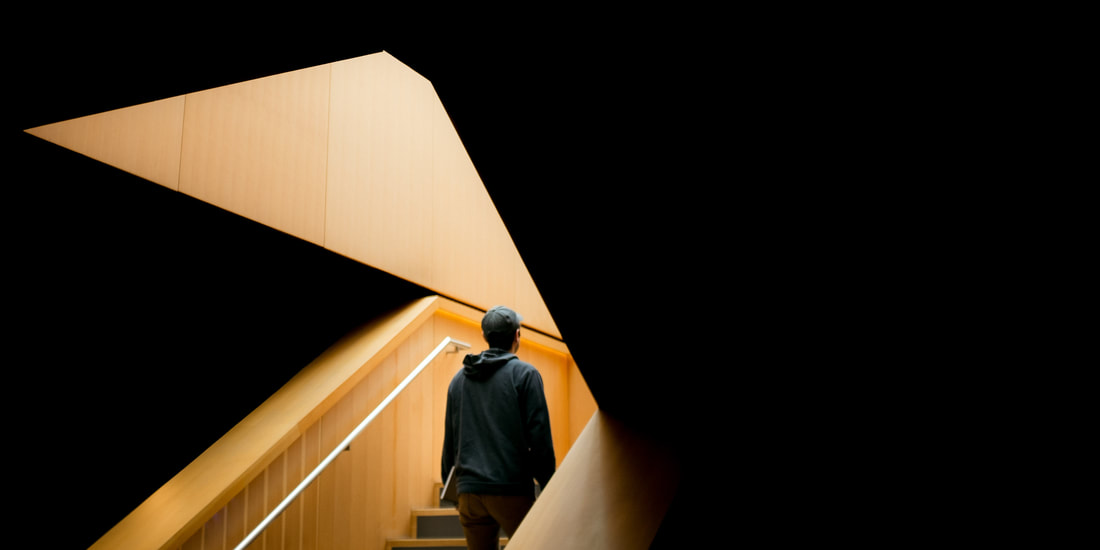
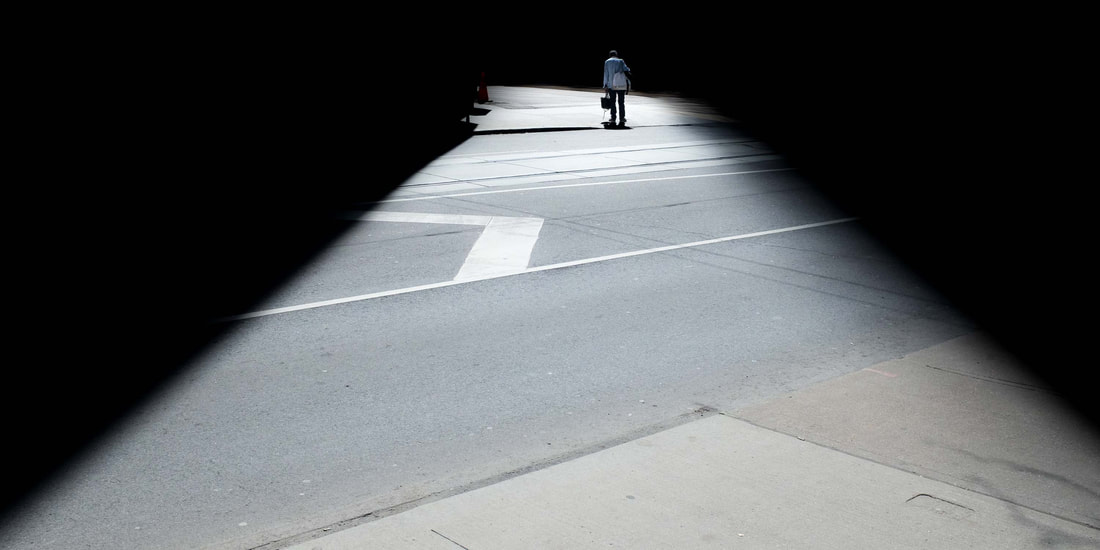













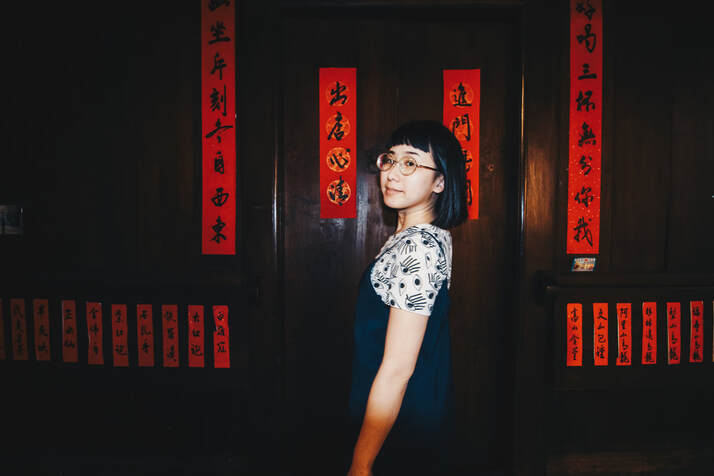




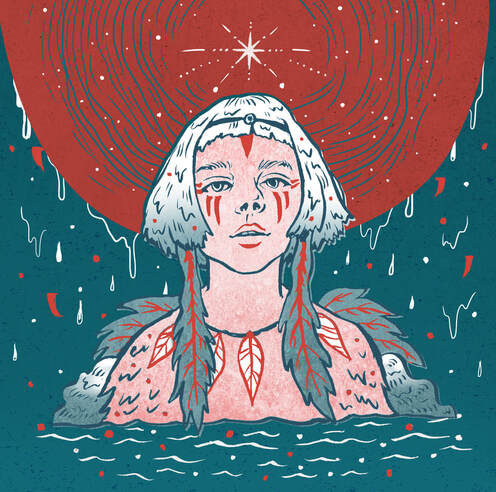
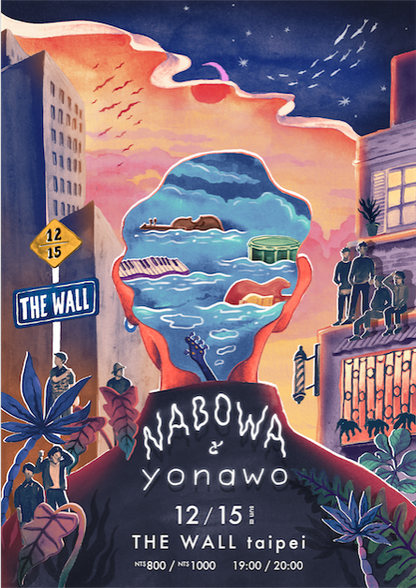

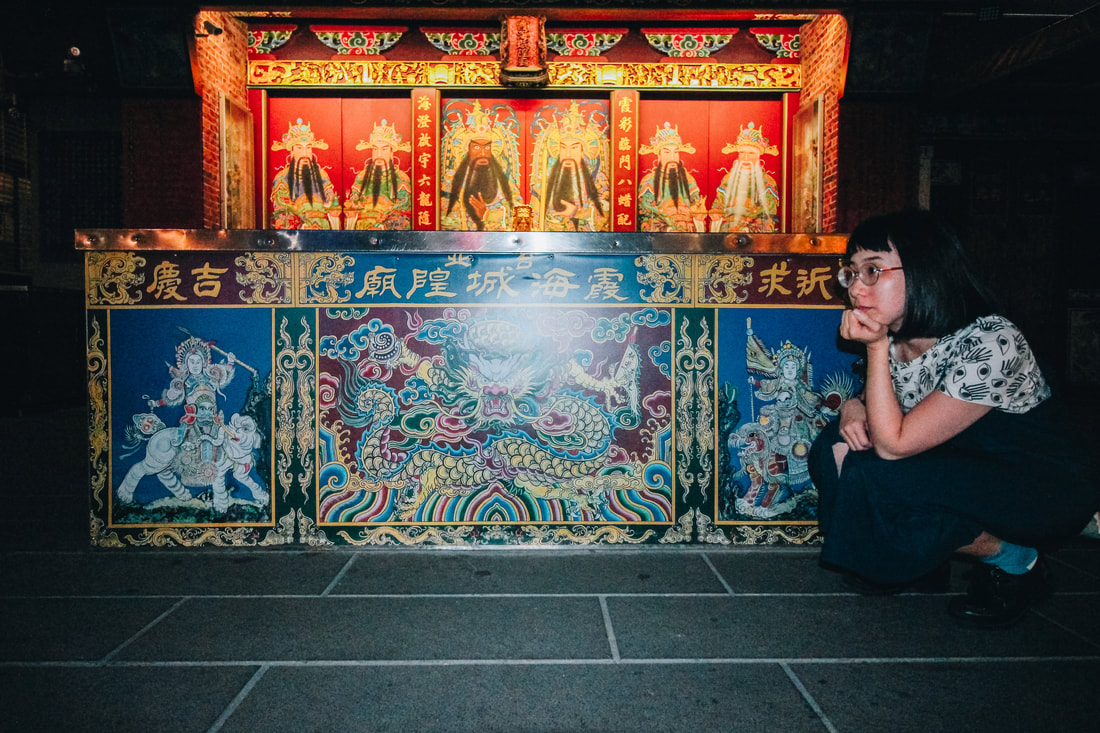






 RSS Feed
RSS Feed
